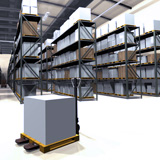Networking and Integration
Road cargo transport is – together with its sibling, the rail cargo business – the logistical backbone of our advanced industry and consumer society. This is because nothing is faster, more flexible, or more cost-efficient on a continental level than a truck. Over the past 20 years, three complementary business models have emerged in this context:
- Operation of large, systematised groupage networks
- Customised support of specific logistic chains in the form of “contract logistics” – aka “third -party logistics” (3PL)
- Stationary logistics (e.g., warehouse management), unless an integrated element of a contract logistics model
In addition, there are multi- or transmodal business models such as air & sea forwarders. In a traditionally highly fragmented market, the past 15 years have witnessed the rise of major transportation groups, conglomerates, and alliances – obviously designed to generate scale effects and market power. A critical success factor in this context is the efficient networking between operational units, as well as the interlinkage of processes and IT systems. Furthermore, major players have the option to establish hybrid models, offering all abovementioned models at the same time – be it based on physical assets, or asset-free (4PL). Large clients with an international footprint take the ability to manage integrated supply and distribution chains for granted – on this playing field, logistic companies, however, face severe competition from globally acting integrators.


